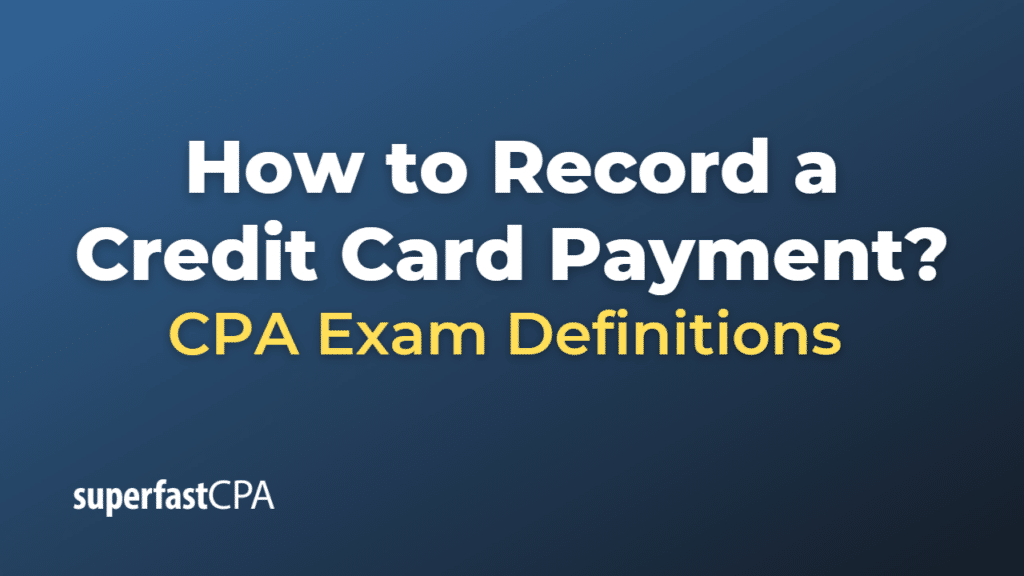How to Record a Credit Card Payment
Recording a credit card payment in your financial records or bookkeeping system typically involves two steps: recording the expenses incurred on the credit card and recording the payment made to the credit card. Here’s a step-by-step guide:
- Record the Credit Card Charges:
When you make purchases with a credit card, each purchase should be recorded as an expense in your bookkeeping system. The corresponding credit will be to the credit card liability account.
For example, if you bought office supplies worth $200 with your business credit card, you would record a $200 debit (increase) to your office supplies expense account, and a $200 credit (increase) to your credit card liability account. - Record the Credit Card Payment:
When you make a payment towards your credit card, you need to record it to show that cash has been spent, and the credit card liability has decreased.
Let’s say you paid off the $200 from the previous example. You would record a $200 debit (decrease) to the credit card liability account, and a $200 credit (decrease) to the bank account from which you made the payment.
Here’s how it might look:
When Purchases Are Made on Credit Card:
| Date | Account Title | Debit | Credit |
|---|---|---|---|
| Jun 1 | Office Supplies | $200 | |
| Credit Card Payable | $200 |
When Payment is Made to the Credit Card:
| Date | Account Title | Debit | Credit |
|---|---|---|---|
| Jun 30 | Credit Card Payable | $200 | |
| Bank Account | $200 |
This process will help you keep track of your business expenses and how much you owe on your credit card at any given time. Also, please note that actual recording practices may vary depending on the accounting software or method you use.
Make sure you record these transactions regularly and reconcile your credit card account monthly to ensure your bookkeeping matches your credit card statements.
Example of How to Record a Credit Card Payment
Let’s take an example where a business owner uses a credit card for business expenses and then makes a payment to the credit card.
- Record the Credit Card Charges:
Suppose, on June 5th, the business owner spends $500 on office supplies and $1500 on new office equipment using the business credit card. This would be recorded as:
| Date | Account Title | Debit | Credit |
|---|---|---|---|
| Jun 5 | Office Supplies | $500 | |
| Jun 5 | Office Equipment | $1500 | |
| Credit Card Payable | $2000 |
In this example, Office Supplies and Office Equipment are expense accounts, and Credit Card Payable is a liability account. The total liability of the credit card is now $2000.
- Record the Credit Card Payment:
Now, let’s say on June 30th, the business owner pays $1000 towards the credit card bill from the company’s bank account. This would be recorded as:
| Date | Account Title | Debit | Credit |
|---|---|---|---|
| Jun 30 | Credit Card Payable | $1000 | |
| Bank Account | $1000 |
After this payment, the remaining balance on the Credit Card Payable account is $1000 ($2000 – $1000).
By recording both the charges and the payments, you can accurately track how much has been spent, what it has been spent on, and how much has been repaid. It’s important to regularly reconcile your bookkeeping records with your actual credit card statements to ensure everything has been recorded correctly.













